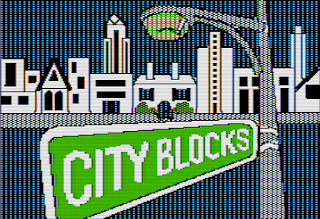A strong contender for my favorite arcade game of all time is the unassuming Time Pilot. We used to have an arcade in Boise called Pojo's Nickel Palace. They had a swath of older arcade games which you could play for a nickel (or two). They had newer, more expensive games also. For ten dollars worth of nickels, you could play Time Pilot for a long time.
In the game, you command a fighter jet, equipped with a time travel device, and guns. The game is a multi directional scrolling shooter, where your jet is positioned in the middle of the screen, and you control the direction of movement with a joystick. The jet is always moving, like an airplane does to stay in the air. There is one button, for shooting your guns. And the game requires shooting continuously.
You must fight your way through different eras of aerial combat. From biplanes, to fighters, to helicopters to jet fighters, to UFOs. As you progress in each level, you eventually destroy enough of the little planes to summon the boss airplane. After destroying the boss, your time travel equipped jet is warped to the next era. After the UFO's you warp back to WWI and the biplanes, but with harder combat. Occasionally, you can pick up a parachuting ally for bonus points. As well, squadrons will appear, and destroying the whole will grant bonus points.
In the game, you command a fighter jet, equipped with a time travel device, and guns. The game is a multi directional scrolling shooter, where your jet is positioned in the middle of the screen, and you control the direction of movement with a joystick. The jet is always moving, like an airplane does to stay in the air. There is one button, for shooting your guns. And the game requires shooting continuously.
You must fight your way through different eras of aerial combat. From biplanes, to fighters, to helicopters to jet fighters, to UFOs. As you progress in each level, you eventually destroy enough of the little planes to summon the boss airplane. After destroying the boss, your time travel equipped jet is warped to the next era. After the UFO's you warp back to WWI and the biplanes, but with harder combat. Occasionally, you can pick up a parachuting ally for bonus points. As well, squadrons will appear, and destroying the whole will grant bonus points.

| 
|
A classic button mashing shoot-em-up favorite














































